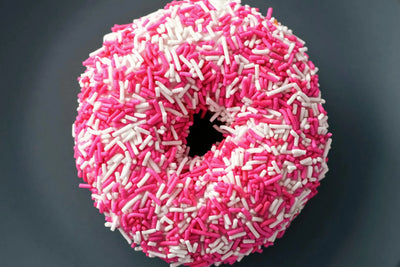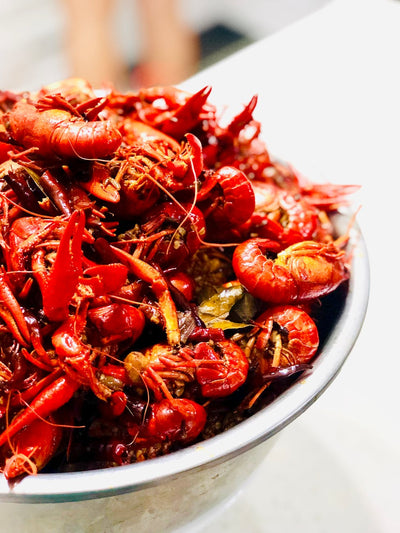Storing Pears in the Fridge
Storing pears correctly in a refrigerator can greatly prolong their freshness and flavor. When you bring pears home, you might wonder about the best practices for storage to ensure they last as long as possible. Here's what you need to know.
Proper Storage of Pears
To maximize the shelf life of your pears, first, make sure they are clean and dry. Any moisture can lead to premature spoilage. Place them in a plastic bag that has had a few holes punched in for ventilation, or better yet, use a perforated plastic bag designed for produce. This will allow ethylene gas, which pears naturally emit as they ripen, to escape and prevent over-ripening.
Store the bagged pears in the fruit crisper drawer of your refrigerator. This drawer is designed to maintain an optimal environment for fruits and vegetables. Your pears should be kept away from strong-smelling foods, as they can absorb odors.
Importance of Refrigeration
Refrigeration plays a crucial role in extending the life of pears by slowing down the ripening process and deterring decay caused by bacteria and molds. While some fruits are adversely affected by cold temperatures, pears are quite tolerant and can benefit from the cool environment.
The ideal temperature for storing pears is between 30°F and 32°F with good humidity. At these temperatures, ripening slows down significantly, allowing you to enjoy your pears for a longer period. Refer to the user manual of your specific refrigerator model to ensure you're using the correct settings for fruit storage.
Remember that not all pears ripen at the same rate. You may need to check on them periodically and move any ripe ones to the main refrigerator compartment for consumption within a few days. For more information on the shelf life of other foods in your fridge, such as how long do figs last in the fridge?, explore our related articles.
Factors Influencing Shelf Life
The longevity of pears in your refrigerator can be influenced by several factors. Understanding these can help you maximize the shelf life of your pears and reduce food waste.
Ripeness of Pears
The stage of ripeness when pears are placed in the refrigerator plays a pivotal role in determining their shelf life. Typically, pears that are just ripe will last longer than those that have already become quite soft. To extend the life of your pears, it's recommended to refrigerate them while they're still a bit firm.
| Ripeness | Expected Shelf Life in Refrigerator |
|---|---|
| Unripe | 2-4 weeks |
| Ripe | 1-2 weeks |
| Overripe | 3-5 days |
Type of Pears
There are various pear varieties, and each has its own expected shelf life when stored in the fridge. For instance, Bartlett pears are more perishable compared to Bosc or Anjou pears. Knowing the specific type of pear you have can guide you in estimating how long they'll last when refrigerated.
| Pear Variety | Expected Shelf Life in Refrigerator |
|---|---|
| Bartlett | 1-2 weeks |
| Bosc | 2-3 weeks |
| Anjou | 2-3 weeks |
Temperature of the Fridge
The temperature within your refrigerator is also crucial in preserving the freshness of pears. Ideally, pears should be stored at temperatures between 35°F and 40°F. Maintaining a consistent temperature helps to slow down the ripening process, thereby extending the shelf life of the fruit.
To ensure that your refrigerator is at the optimal temperature for storing pears and other produce, consider purchasing a fridge thermometer. This simple tool can help you monitor the environment inside your refrigerator, keeping your pears and other perishables fresh for as long as possible.
How Long Do Pears Last in the Fridge?
Storing pears in the fridge can significantly extend their shelf life compared to leaving them at room temperature. Here's how long you can expect pears to last in the refrigerator:
Whole Pears
Whole pears can last longer in the fridge as their intact skin provides a natural barrier against moisture loss and spoilage. The longevity of pears in the fridge will depend on their ripeness when stored.
| State of Ripeness | Estimated Shelf Life in Fridge |
|---|---|
| Unripe | 2-4 weeks |
| Ripe | 5-7 days |
To maximize freshness, store your pears in the crisper drawer away from strong-smelling foods. This prevents the pears from absorbing unwanted odors and ensures they maintain their natural aroma and taste.
Sliced Pears
Once pears are sliced, their shelf life decreases due to the exposure of the flesh to air and moisture, which can accelerate spoilage.
| Storage Condition | Estimated Shelf Life in Fridge |
|---|---|
| Sliced with peel, covered | 3-5 days |
| Sliced without peel, covered | 2-3 days |
To prolong the freshness of sliced pears, store them in airtight containers or resealable plastic bags. If possible, sprinkle lemon juice on the cut surfaces to prevent browning and keep them appetizing.
Cooked Pears
Cooked pears are often used in desserts or as a sweet accompaniment to savory dishes. Once cooked, pears should be stored in the refrigerator to maintain their quality.
| Preparation Method | Estimated Shelf Life in Fridge |
|---|---|
| Poached or stewed | 3-5 days |
| Baked (e.g., in pies or crumbles) | 4-6 days |
Ensure that cooked pears are stored in air-tight containers to avoid absorbing flavors from other foods. Always wait for the cooked pears to cool down to room temperature before refrigerating them.
For more information on preserving the freshness of various foods, you might want to read about how long do tamales last in the fridge? or how long does milk last in the fridge?. Remember, these estimates serve as a general guideline, and the actual shelf life of your pears may vary depending on several factors, including the initial freshness and handling practices.
Signs of Spoilage
When storing pears in the refrigerator, it's crucial to recognize the signs of spoilage to ensure that you consume them while they are still at their best quality. Here are a few indicators to watch out for:
Visual Changes
Pears may exhibit visual signs of decay that are easy to spot. Look for any discoloration such as dark spots that could indicate bruising or the beginning stages of rot. Over time, you may also notice that the skin of the pear becomes dull and loses its natural sheen, which can be a sign that the pear is past its prime.
Texture Changes
Fresh pears have a firm texture when they are unripe and become slightly soft as they ripen. If the pear feels excessively soft or mushy to the touch, especially around the stem or the bottom, it may be overripe or spoiled. Additionally, if you observe any wrinkling of the skin, it can suggest dehydration and loss of freshness.
Smell Changes
A ripe pear will have a sweet, fragrant aroma. If the pear begins to emit an off-putting or fermented smell, it's a clear sign that the pear has started to spoil. Trust your senses—if something smells foul or unusual, it is better to discard the pear to avoid any potential foodborne illness.
Being aware of these spoilage indicators can help you make the most of your pears and reduce food waste. For more insights on keeping various food items fresh, explore articles such as how long do tamales last in the fridge? and how long does milk last in the fridge? to ensure you are informed about the best storage practices for a variety of foods.
Extending the Shelf Life of Pears
Ensuring that pears last as long as possible in the fridge involves proper storage techniques. By following these tips, you can enjoy your pears fresh for a longer period.
Proper Packaging
To extend the shelf life of pears in your refrigerator, proper packaging is essential. Pears need to breathe, so avoid sealing them in airtight containers which can hasten spoilage due to ethylene gas accumulation. Instead, store them in perforated plastic bags or covered containers that allow for some airflow.
Here are a few steps for packaging pears:
- Gently wrap each pear individually in paper towels. This helps to absorb excess moisture and prevent the spread of spoilage if one pear starts to go bad.
- Place the wrapped pears in a plastic bag with small holes or a container with a loose-fitting lid.
- Keep the packaged pears in the fruit compartment of your fridge, away from strong-smelling foods, as pears can absorb odors.
By following these packaging tips, you can significantly prolong the freshness of your pears. For comparison of shelf life with various other foods, you may be interested in reading about how long do mandarins last in the fridge? or how long does milk last in the fridge?.
Using the Crisper Drawer
The crisper drawer in your refrigerator is designed to maintain a slightly different humidity level compared to the rest of the fridge, which is ideal for storing fruits like pears. Utilizing the crisper drawer can help maintain the quality and longevity of your pears.
To effectively use the crisper drawer:
- Set the humidity control to high, as pears prefer a more humid environment to prevent them from drying out.
- Avoid overfilling the drawer. Pears need space for air circulation, which helps to reduce the buildup of ethylene gas and moisture.
- Do not mix fruits and vegetables in the same drawer. Vegetables can be sensitive to the ethylene gas produced by fruits and may spoil faster.
By using these storage methods, you can help ensure that your pears remain delectable and ready to eat for as long as possible. For more insights on storing different types of produce, explore articles like how long do sweet potatoes last in the fridge? or how long do figs last in the fridge?.
Utilizing Pears Before They Spoil
Maximizing the use of your pears before they spoil is not only economical but also a delightful way to explore various culinary creations.
Recipe Ideas
When your pears are at the peak of their freshness, they can be used in a myriad of recipes. Here are some delicious ways to incorporate pears into your meals:
- Pear and Arugula Salad: Combine fresh arugula leaves, sliced ripe pears, crumbled goat cheese, and toasted walnuts for a refreshing salad. A drizzle of balsamic vinaigrette ties all the flavors together.
- Grilled Pear Pizza: Top a pizza dough with thin pear slices, gorgonzola cheese, caramelized onions, and mozzarella. Grill or bake until golden and bubbly.
- Pear Crisp: Mix sliced pears with cinnamon and sugar, then cover with an oat-based crumble topping. Bake until the topping is golden and the pears are tender.
- Pear and Prosciutto Sandwiches: Layer ciabatta bread with thinly sliced pear, prosciutto, and a spread of creamy brie cheese for a sweet and savory sandwich.
For more ideas on using fruit in your meals, consider exploring how to incorporate other produce like how long do mandarins last in the fridge? into your dishes.
Creative Ways to Use Overripe Pears
Even if your pears have moved past their prime, they can still be transformed into delectable dishes. Here are some inventive ideas:
- Pear Sauce: Simmer overripe pears with a touch of sugar and cinnamon to create a sauce similar to applesauce. This can be used as a topping for pancakes, waffles, or yogurt.
- Pear Butter: Cook down the pears with spices until they become thick and spreadable. This pear butter can be a delightful addition to toast or as a sweetener in oatmeal.
- Pear Smoothie: Blend overripe pears with yogurt, honey, and a splash of milk to make a creamy smoothie.
- Baked Pear Dessert: Core the pears, stuff them with a mixture of oats, nuts, and honey, then bake until soft and caramelized.
Remember to always check your pears for signs of spoilage before using them, and when in doubt, refer to our guide on how to tell if pears have gone bad?. By using these recipes and ideas, you can enjoy the delightful taste of pears in various forms, all while reducing food waste.
Frequently Asked Questions
Can you freeze pears?
Yes, pears can be frozen, which is a great way to extend their shelf life. To freeze pears, first wash, peel, and core them. Then, slice the pears or cut them into chunks and coat them with a mixture of water and lemon juice to prevent browning. Place the pears on a baking sheet in a single layer and freeze until solid. Once frozen, transfer the pears to airtight containers or freezer bags. Frozen pears can be kept for up to 6 months when properly stored.
How to tell if pears have gone bad?
Pears that have gone bad often exhibit several telltale signs. Visually inspect the pears for any mold growth or dark soft spots. If the skin has become excessively wrinkled and the pear feels mushy when lightly pressed, it may be overripe and beginning to spoil. Additionally, if the pears give off an off-putting or fermented odor, they should not be consumed. For a guide on how to assess if other foods have gone bad, you can check out articles like how long does milk last in the fridge?
Are there ways to revive wilted pears?
While it's difficult to fully "revive" wilted pears, there are ways to make use of them before they spoil. If the pears are slightly soft but not rotten, consider using them in recipes where the texture is less critical, such as smoothies, pear sauce, or baked goods like muffins and bread. Additionally, overripe pears can be pureed and used as sweeteners in various dishes. However, if the pear is showing signs of spoilage, it is best to discard it. For more ideas on utilizing perishable items, explore how long do figs last in the fridge? and other related articles.
Get Your Upgrade or New Addition at Fridge.com
Whether you're searching for your perfect fridge, freezer, wine fridge, beer fridge, ice maker, or kegerator, we have what you need.
Shop the world's best brands at Fridge.com.
We also have tons of awesome articles about kitchen stuff and home news. Enhance your home, garage, backyard, patio, and office with the coolest essentials. With every necessary type of residential refrigerator or freezer in our collection, we've got you covered.
Elevate your game and shop now at Fridge.com!






